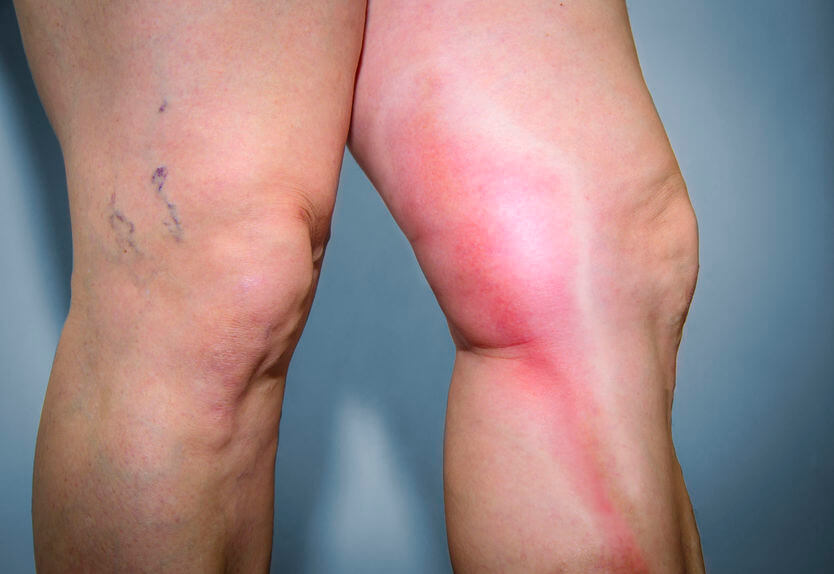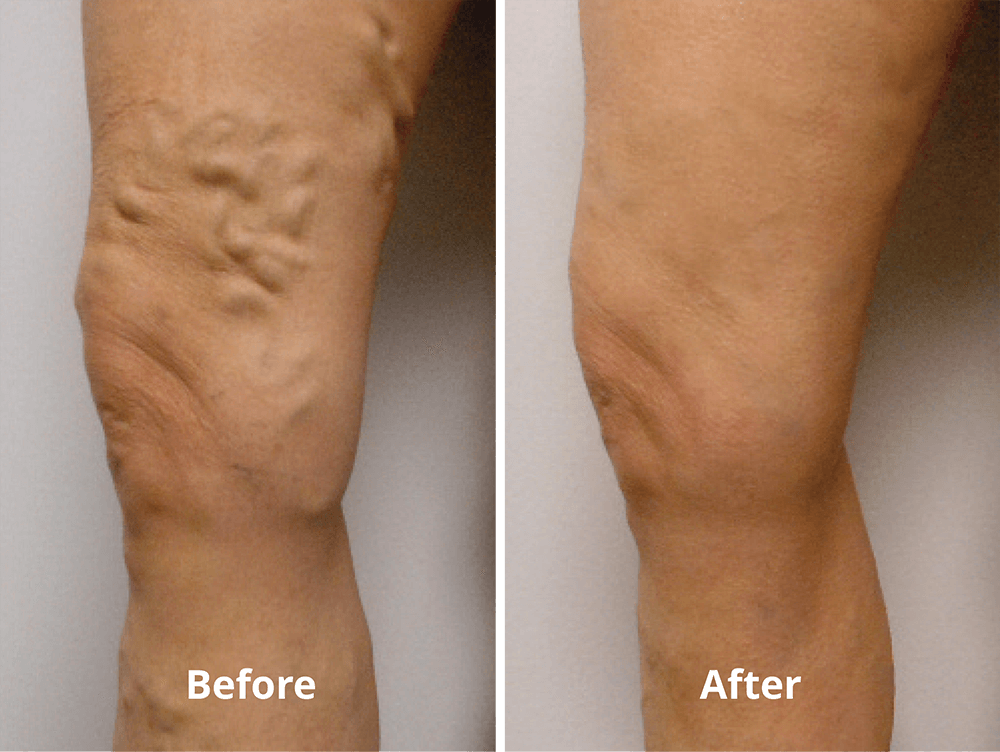Thrombophlebitis
What Is Thrombophlebitis?
Thrombophlebitis is inflammation of a vein caused by a blood clot (also known as a thrombus). Thrombophlebitis (throm-boe-fluh-BY-tis) is an inflammatory process that causes a blood clot to form and block one or more veins, usually in your legs. The less specific term, “superficial phlebitis” is typically used as an initial, provisional diagnosis until further tests/imaging studies have been completed. Superficial phlebitis does relate to the clinical findings of pain/redness/inflammation of the vein without the confirmed presence of a clot. There are three specific kinds of thrombophlebitis, diagnosed by location.
- Superficial thrombophlebitis (STP)
- Superficial Venous Thrombosis (SVT)
- Deep vein thrombosis (DVT)

What Are the Symptoms?
There are a variety of symptoms that may accompany thrombophlebitis including:
- SWELLING – Recent swelling of the limb
- PAIN – Unexplained limb pain or tenderness
- WARMTH – Skin that may be warm to the touch
- REDNESS — Redness of the skin
When a vein close to the surface of your skin is affected, you might see a red, hard cord just under the surface of your skin that’s tender to the touch. When a deep vein in the leg is affected, your leg may become swollen, tender, painful, and is usually difficult to walk on.
More About Thrombophlebitis
Superficial Thrombophlebitis (STP) usually occurs in surface-layer veins (usually located in the legs) and are often located in large caliber, dilated varicose veins. Superficial venous thrombosis (SVT), means the finding of thrombus involving the larger superficial saphenous veins, such as the great saphenous vein. Depending on location, SVT may extend (propagate) into the deep venous system, resulting in a more serious deep venous thrombosis (DVT), when the deep veins of the legs (deep to the muscle layer) develop a thrombus. When a DVT develops, there is a chance that a clot can break off and enter the pulmonary vasculature, known as a pulmonary embolus (PE)-which can be a life-threatening complication.
How Is It Treated?
See your doctor right away if you have a red, swollen or tender vein. Call 911 if you have any symptoms of shortness of breath, knife-like chest pain on inspiration, coughing up blood, or rapid heartbeat.
Treatment Overview
Your healthcare provider may order additional labwork and obtain imaging, including Duplex ultrasonography to better visualize and diagnose thrombophlebitis, in conjunction with history-taking and physical exam. Depending on results, anti-inflammatories (NSAIDs) and compression stockings may be utilized for superficial thrombophlebitis. Anticoagulation (blood thinner) medication is utilized if there is a presence of an acute DVT or if an SVT is showing evidence of encroaching on the deep venous system.
IVS Treatment Approach
At Indiana Vein & Lymphatic, we understand the serious impact that thromboembolic disease has on our patients and their families. As underlying venous disease can play a significant role in the majority of patients who have been affected by thrombophlebitis, we will collaborate with your referring physician to determine the best care plan for you.
About the Treatments and Risk Factors
Click to View Risk Factors
-Pregnancy
-Hormonal Therapy (e.g. estrogen)
-Malignancy/Active cancer
-Pre-existing venous disease/varicose veins
-Certain genetic states (e.g. Factor V Leiden)
-Advanced age
-Obesity
Vein Disease Diagnosis
More
Venous Treatment Phases
More
Conservative Measures
More
Schedule a Consultation


“I can now endure intense cardio and leg workouts, and it does feel like I’ve been given a new set of legs.”
